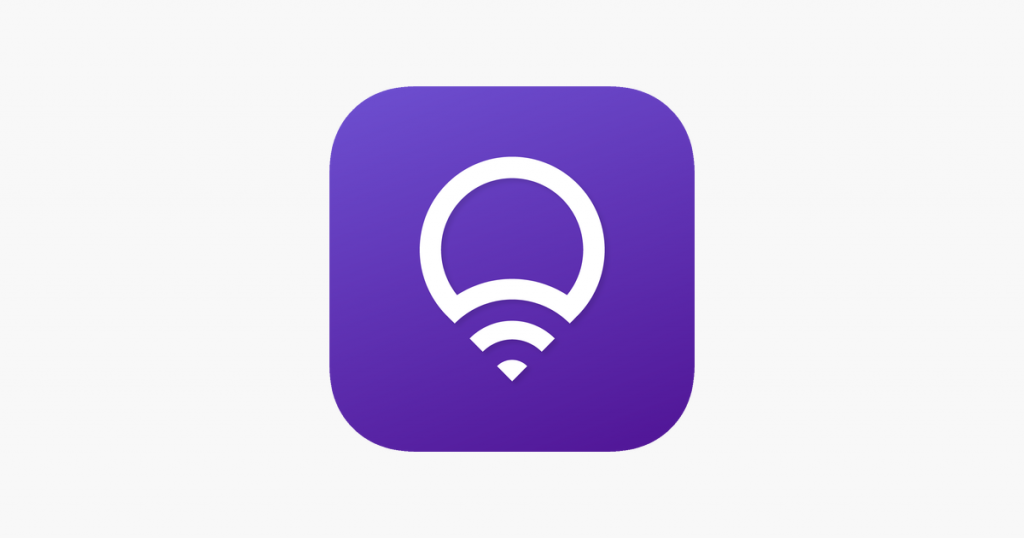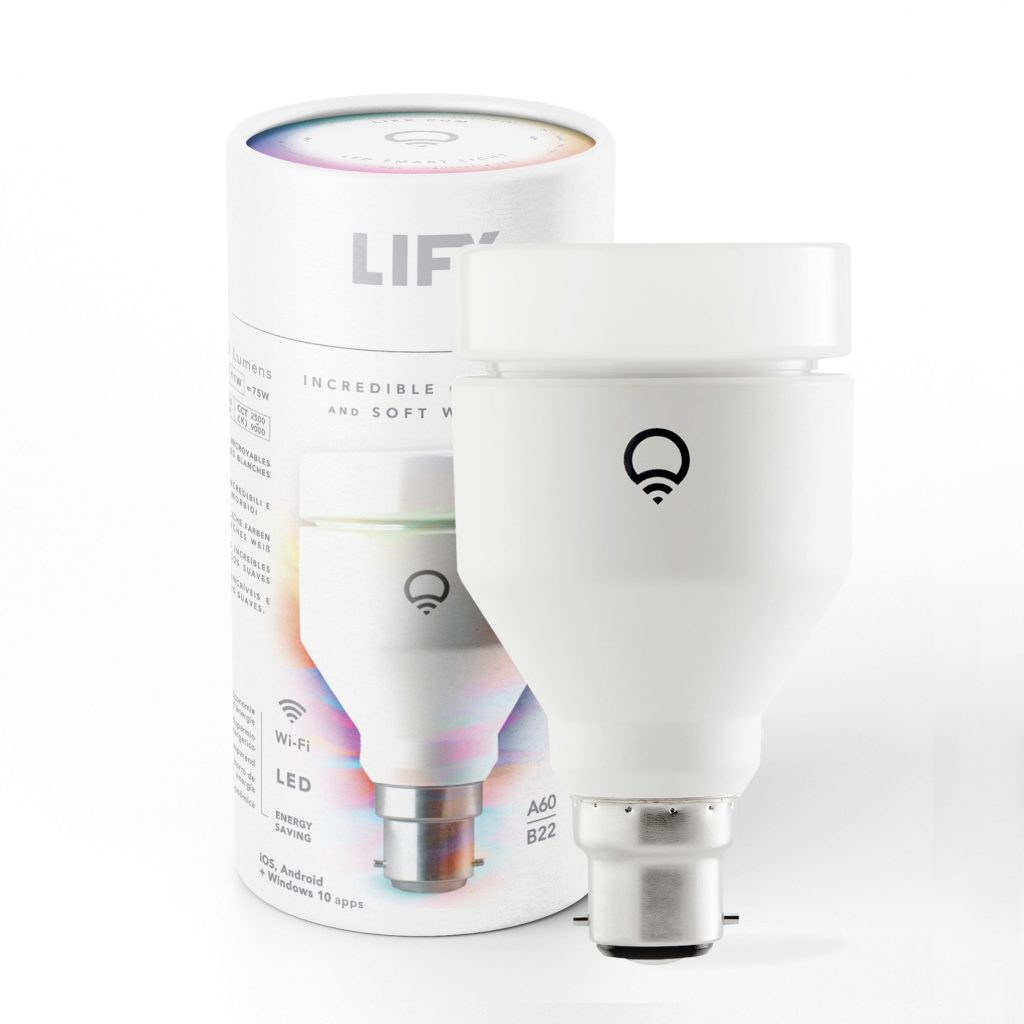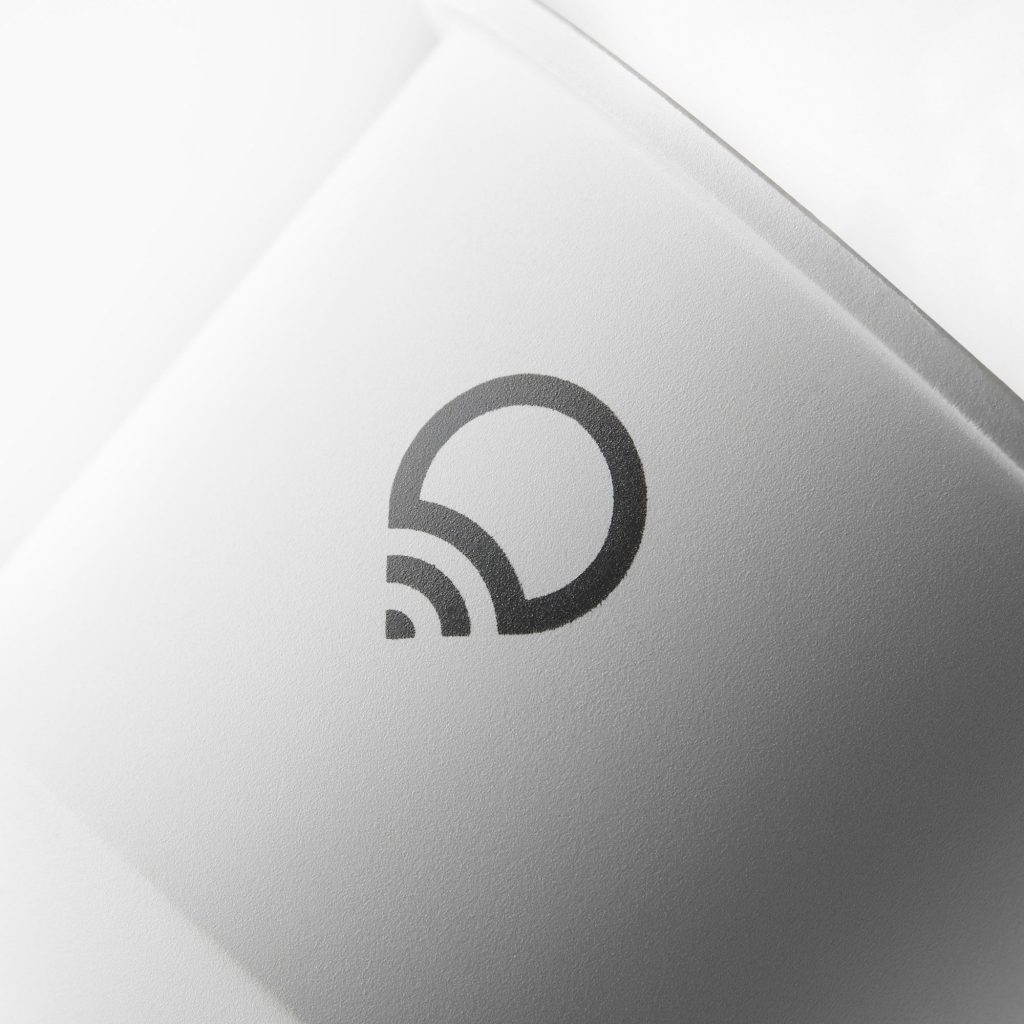I began my exploration into the world of home automation and HomeKit with a modest smart plug and found it intriguing, but it wasn’t until I picked up some smart lighting that I really got hooked. I started out, as many of us do, with the Phillips Hue starter pack and quickly built out my entire home using this system. While the Hue system has many advantages namely the sheer number of lighting options, reliability, and speed, it is not without its drawbacks. Starting in 2012 on Kickstarter, the start-up LIFX has quickly become a dominating force in the smart lighting realm and is the preferred lighting option for many smart home enthusiasts due to their modern design, color representation, brightness, and flexibility of control. Though it took them a while to jump on board, LIFX rolled out HomeKit support for many of their products in 2017. Today we’ll be looking at their A19 Color LED bulb.
Features
- 1100 lumens / 75 watt incandescent equivalent
- Full RGBW color and temperature spectrum
- 22+ year LED lifespan
Need to Knows
- Requires an 802.11b, g, or n WiFi network with WPA2 security configured
- 2500 to 9000K temperature range
Pros
Touted as a 75W-equivalent, this bulb’s 1100 lumen flux is impressively luminous. It’s output is also pretty well diffused. Coming from a house full of various Hue products, I was a bit shocked at the bulb’s brightness and, in fact, found myself having to dim it for most situations.
The color saturation and representation of this LED bulb are also rather dramatic. While many LED lights tend to struggle with yellows, greens, and blues, the LIFX A19 handles these with no problem at all even at high brightness levels.
LIFX’s A19 bulbs have a distinct design which stray away from the rounded head shape harkening back to the good ol’ days opting instead for a flat top which provides a sleek, modern aesthetic.
NO HUB REQUIRED! While this may be viewed as a negative for those concerned about how many WiFi devices are connected to their network, it is pretty convenient to not have to worry about having a free ethernet port on your router.
Cons
Since the LIFX bulbs connect over WiFi and contain more diodes thus requiring the appropriate hardware, they tend to be a bit larger than “dumb” LED bulbs, and even other “smart” bulbs, though not exceptionally so. This may be something you’ll want to consider depending on where you plan to install the light.
Though not nearly as intense as traditional incandescent bulbs, CFLs, or other LEDs lights, through out testing, we did find that the LIFX ran a bit hotter compared to other bulbs we’ve played around with. By no means do we think it’s a cause for concern, it is something we noted.
From the beginning, LIFX has struggled a bit with HomeKit integration. Though they’ve seemed to work it out on the firmware and hardware side, we found HomeKit setup using the LIFX app clumsy, unintuitive, and cumbersome. Despite having a HomeKit specific setup guide, we had to try several times through the LIFX ap resetting the bulb and ultimately resorted to adding it to HomeKit via Apple’s Home app once we connected it to the LIFX app. This slight hiccup aside, once we had it set up, we didn’t have any problems controlling it either from the LIFX app nor other HomeKit apps. In our setup and review video, we go through a straight-forward approach to adding LIFX to HomeKit:
The App

The LIFX app is pretty robust offering various lighting themes and effects. This is something that we don’t often see in other smart lighting apps and can be quite entertaining. I particularly like the music visualizer which syncs sound picked up through your device’s microphone and your LIFX lights creating a great effect for movie time or when playing music. I also appreciate the more detailed level of control that the apps allows for the different themes and scenes.
The app also integrates timers and scheduling with fairly granular control. It also boasts a nifty daylight simulator to help you keep your Circadian Rhythm in check.
The UI is pretty user-friendly though I’m not the biggest fan of their choice of color wheel/dimming functionality. It seems as if they were trying maybe a bit too hard to differentiate themselves here.
Lastly, like the Hue app, this is not necessarily a HomeKit app. No other HomeKit accessories or lights are made available in the LIFX app, but understandably so, I suppose. Though it might be a leg up on the competition if they played nice with other lighting systems and thumbed their nose at convention.
Final Thoughts
Over the years, I’ve invested a large amount into my Phillips Hue lighting system and am pleased with it by and large. My only disappointment with it is brightness, really. Sure, they can, and do, work on improving color saturation and temperature range, but I can glaze over shortcomings for a brighter output. On this front, LIFX definitely delivers. It doesn’t hurt that the colors in this bulb are vibrant, and if you’re using this bulb as an accent light, can really make the subject stand out. It’s color temperature range is also pretty extensive.
Personally, I do have a concern with LIFX as a whole-home lighting solution, however, and that is it’s connectivity for me at least. I run an Airport Extreme base station with a few Airport Express extenders as my wireless network and the device limit is 50. With phones, tablets, computers, HomePods, and a myriad of WiFi HomeKit devices, I am more selective about which devices use which protocol so I don’t mind a hub. Plus, Zigbee is a touch faster than WiFi. I see myself using LIFX products in a relatively limited amount of applications, though the reason I bought this bulb in the first place was because my wife wanted more brightness in her dressing area than Hue could provide.
On a final note and this is something that most people are concerned about: the price and the price compared to the Hue system. I look at this from a bit of a different perspective. Sure, the Hue system requires a hub, but it also has an extremely wide range of lighting options at a variety of price points as well. It also supports some pretty useful accessories that can also be used with HomeKit…wait, could this be foreshadowing? In general, it really boils down to your plans for the present and the future in terms of lighting. Are you looking to just add a bit of flare to a space or are you looking to deck out your entire place? Do you need flexibility in lighting or do the basics suit your needs? The magical thing is that with HomeKit, we can bridge the divide between these two rivals and break bread. HomeKit as a unifying force, I like it.
Are you team LIFX or Phillips Hue? In which scenarios do you think one is more well-suited over the other? Do you ignore smart lighting altogether and just use smart switches? Are you partial to one of the other HomeKit smart lighting options out there? We love to hear from you. Please direct your ideas to the comment section below and our social medias is lit @myhomekithome.
Links & Resources
Check out LIFX’s entire lineup of HomeKit-enabled smart lighting products at https://www.lifx.com
We use income-earning affiliate links.
We may receive a small commission on purchases made using links on this page at no extra cost to you.




